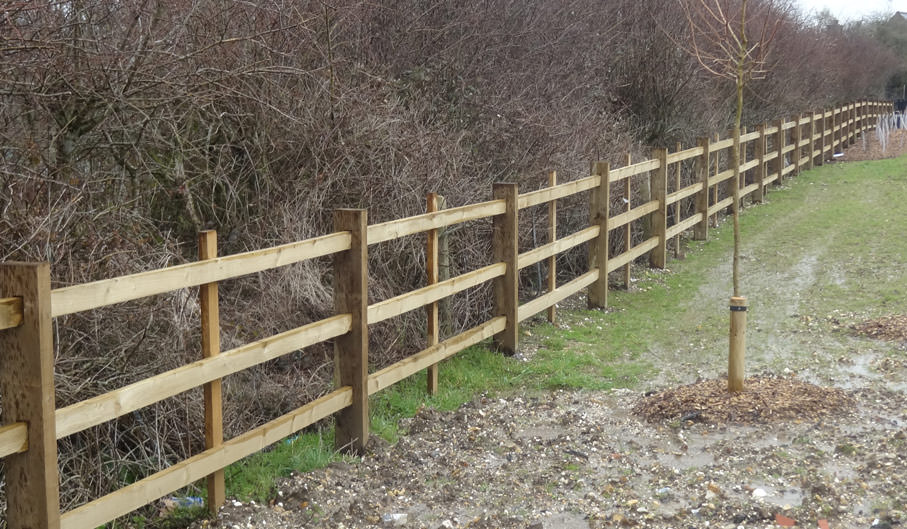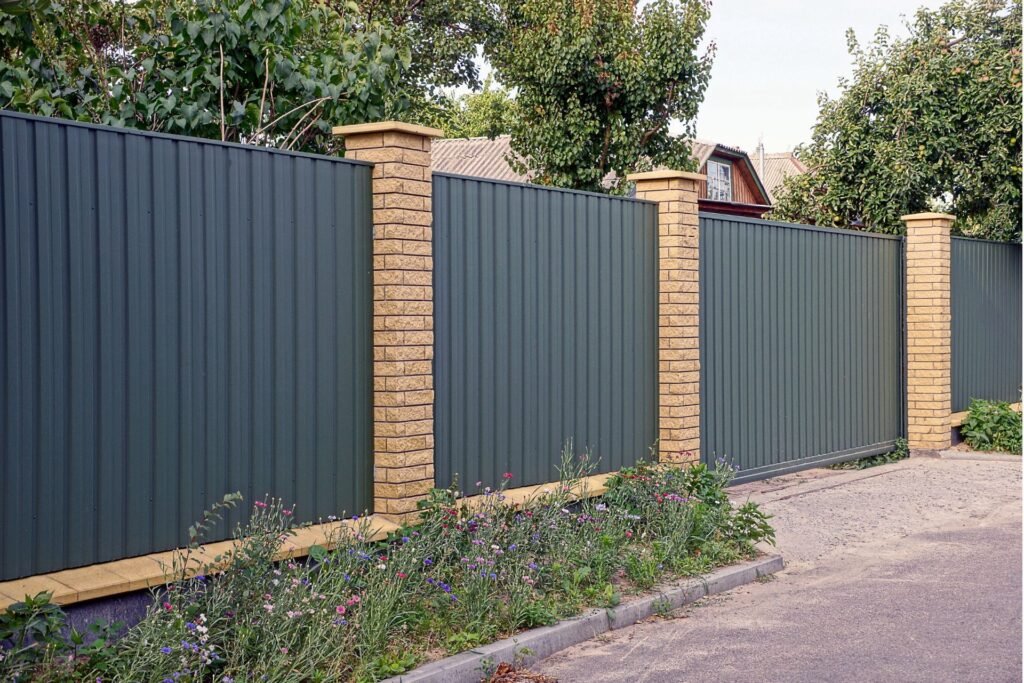Why More Homeowners Are Choosing Custom Options From Fence Builders
Why More Homeowners Are Choosing Custom Options From Fence Builders
Blog Article
A Comprehensive Guide to Fence Install: What You Required to Learn About Secure Fencing Services
When it comes to installing a fence, you have actually got a lot to consider. You'll need to examine your residential or commercial property and make a decision if you want to take on the installment yourself or hire an expert.
Comprehending Various Kinds of Fencing Products
When you're picking a fence, comprehending the various types of fence products is necessary. Each product provides special advantages and drawbacks, affecting your choice. Timber provides a traditional look and can be tailored, but it needs normal upkeep and may rot gradually. Plastic is low-maintenance and durable, withstanding fading and bugs, yet it can be pricier upfront. Chain-link fencing is economical and practical for enclosing big locations, though it lacks privacy and visual appeal. Metal fence, like wrought iron or aluminum, uses stamina and style yet may need rust protection. Composite materials blend the very best of wood and plastic, providing longevity with an all-natural appearance. Consider your budget, preferred aesthetics, and upkeep preferences when assessing these options. Ultimately, choosing the right material will certainly aid you develop a fence that fulfills your needs and enhances your home's value.
Assessing Your Property and Fence Needs
Prior to you start your fence setup, it's important to assess your property borders and the function of your fencing. Recognizing regional policies and permits will certainly also aid you prevent any type of legal concerns down the line. By taking into consideration these aspects, you'll ensure your fence meets both your needs and area requirements.
Residential Property Borders and Lines
Comprehending your residential or commercial property borders is important for a successful fence installation, as it not only helps you establish where your fence will go but also guarantees you're respecting your neighbors' space. Begin by assessing your home deed or study, which generally lays out the exact boundaries. You might additionally intend to talk to a specialist surveyor if you're unclear.
When you have actually established your limits, mark them clearly with stakes or flags. This visual help will certainly lead you during the setup and avoid any kind of conflicts with neighbors. Keep in mind, regional zoning legislations might determine fencing positioning and elevation, so check those policies as well. Taking these actions warranties your fencing is properly positioned and compliant, making the entire procedure smoother for you.
Purpose of Fencing
Fencing serves several purposes that can substantially enhance your property. It provides security by developing an obstacle that hinders invaders and protects your belongings. Second, it provides privacy, allowing you to appreciate your outdoor room without bothering with prying eyes. Third, secure fencing can specify your home limits, making it clear where your space finishes and your neighbor's starts. Additionally, it can boost the aesthetic appeal of your home, adding character and style while boosting aesthetic charm. Lastly, a well-placed fencing can aid take care of noise from neighboring roads or next-door neighbors and even maintain animals and youngsters risk-free. By examining your specific requirements, you can choose the ideal kind of fence to achieve these advantages efficiently.

Local Laws and Permits
How can you ensure your fence installation complies with local regulations? Start by getting in touch with your local zoning office or metropolitan website. Fence Company. They often have standards about fencing elevation, materials, and positioning. You'll also intend to discover out if you require an authorization prior to starting your project. Some locations call for licenses for any brand-new fencing, while others may only need them for taller structures.
Furthermore, consider residential or commercial property lines and any kind of easements on your land. Marking your limits can protect against conflicts with next-door neighbors or potential legal concerns. By understanding these guidelines ahead of time, you can avoid expensive blunders and determine your fencing is developed to last, improving both your residential or commercial property's worth and your peace of mind.
Local Laws and Permits for Fencing
Prior to you start your fence task, it is essential to inspect neighborhood regulations and acquire any kind of necessary permits. Each city or region has its very own regulations regarding fencing elevation, products, and positioning. These regulations guarantee that your fence conforms with safety standards and area aesthetic appeals.
Beginning by seeing your local zoning workplace or their site to discover certain requirements. Fence Company. You might require to submit a fencing strategy, describing dimensions and products. Some areas might also call for a study to validate residential or commercial property limits. Don't fail to remember to think about any type of house owners' association (HOA) guidelines, as they can enforce additional limitations.
Disregarding to comply with these policies can result in penalties or compelled elimination of your fence, wasting both money and time. So, put in the time to research study and secure the proper authorizations for a smooth setup process. This step is crucial in making sure your task lines up with local laws and neighborhood standards.
Choosing Between Do It Yourself Setup and Professional Providers
Are you considering whether to take on the fencing installation yourself or work with an expert? This decision pivots on a number of factors. Evaluate your skill level. If you're useful and have experience with similar jobs, DIY might save you money. However, be sincere about your capabilities; blunders can result in extra costs and headaches.
Setting up a fencing takes time, and if you're managing a hectic routine, employing an expert can ensure it gets done effectively. If your lawn has challenging terrain or specific design requirements, professionals bring knowledge that can make a difference.
Lastly, consider regional policies. A professional knows the permits and codes needed, helping you avoid potential fines. Ultimately, weigh your skills, time, complexity, and policies to make the most effective option for your secure fencing job.
Step-by-Step Overview to Fencing Installment
As soon as you have actually determined to relocate forward with your fence installation, following a structured step-by-step method will guarantee a smooth process. Start by marking the fence line with stakes and string to envision the format. Next off, examine neighborhood regulations to validate compliance with height and building lines.
Dig blog post openings a minimum of 2 feet deep, spaced according to your fencing kind-- usually 6 to 8 feet apart. Put the articles into the openings and fill them with concrete for security. When the blog posts are set, affix the horizontal rails or panels, ensuring they're degree.
Secure the panels or pickets, verifying they line up properly. If you're using gateways, install them discover this last, ensuring they turn openly. Finally, look for any loosened connections and make needed adjustments. Your fencing needs to now be all set to enhance your residential property and offer the personal privacy or safety and security you require!
Upkeep Tips for Longevity of Your Fence
To maintain your fencing looking fantastic and enduring much longer, normal maintenance is crucial. You must set up a cleansing timetable, inspect for any damages, and use protective finishes as required. By staying aggressive with these tasks, you'll assure your fence stays sturdy and appealing for years ahead.
Normal Cleaning Set Up
While it may be very easy to forget, establishing a routine cleaning routine is essential for maintaining the long life of your fencing. Beginning by washing your fencing with water a minimum of as soon as every period to get rid of dust and particles. For wood fences, utilize a gentle soap solution and a soft brush to scrub away any kind of mold and mildew or mildew. Don't forget to look for any rust on steel fencings; a cable brush can aid remove it, followed by a coat of rust-resistant paint. If you live in an area with heavy plant pollen or dirt, you might want to boost your cleaning frequency. Maintaining your fence tidy not only boosts its look yet additionally expands its life, saving you money in the future.
Examine for Damage
Consistently evaluating your fencing for damage is essential if you desire to preserve its honesty and long life. Beginning by walking around your fence to look for visible indications of wear, such as fractures, loose boards, or corrosion. Check for any signs of pests, like termites or woodpeckers, that could compromise your fence's structure.
Apply Safety Coatings
After examining your fence for damage, using safety coverings is an essential action in ensuring its longevity. Depending on the material, you'll wish to pick the appropriate kind of layer. For wooden fences, a top notch sealer or wood discolor can avoid wetness absorption and discourage pests. If your fencing is plastic or steel, think about a UV-protective spray or paint to avoid fading and rust.
Ensure to clean the surface area extensively before application, as dirt and gunk can undermine the browse this site coating's performance. Apply the covering in completely dry weather for better adhesion, and do not fail to remember to follow the manufacturer's instructions for the very best results. Routinely reapply every few years to maintain your fencing looking wonderful and standing strong against the elements.
Cost Considerations and Budgeting for Your Fence Task
When preparing your fencing task, comprehending cost considerations is vital to remaining within budget plan. Start by establishing the type of product you want, as expenses can differ significantly in between timber, vinyl, and steel. Don't fail to remember to consider labor expenses-- working with professionals may conserve you time yet can enhance your total expenditures.
Following, determine your property to calculate the linear video footage needed, as this directly impacts material costs. Furthermore, consider any type of licenses you may require, which can add to your budget plan.

Finally, it's a great concept to set aside a contingency fund for unanticipated expenses. By planning thoroughly and thinking about these variables, you can create a realistic budget that fulfills your fencing needs without damaging the financial institution.
Often Asked Inquiries
For how long Does the Typical Fencing Installation Take?
The average fencing installment typically takes one to 3 days, relying on the review fence type and dimension of your yard. You'll require to consider any type of hold-ups due to weather or allow needs also.
What Should I Do if My Fencing Is Harmed?
If your fence is damaged, initially assess the degree of the damage. Repair small concerns yourself, however for major troubles, consider getting in touch with a specialist. Don't wait too long; it'll help prevent better issues.
Can I Set Up a Fencing on a Slope?
Yes, you can install a fence on a slope. You'll need to adjust your setup approach, either by tipping the panels down or making use of a racked layout to assure security and proper alignment with the terrain.
What Are the most effective Practices for Fence Paint?
To paint your fence successfully, begin with correct cleansing and sanding. Usage high-quality paint and apply in even strokes. Don't forget to pick the right weather for paint, guaranteeing it's dry and mild.
Exactly how Usually Should I Examine My Fence?
You should inspect your fencing at the very least twice a year, concentrating on signs of damages, rot, or corrosion. Routine checks aid you catch issues early, guaranteeing your fencing remains durable and aesthetically enticing longer.
Report this page